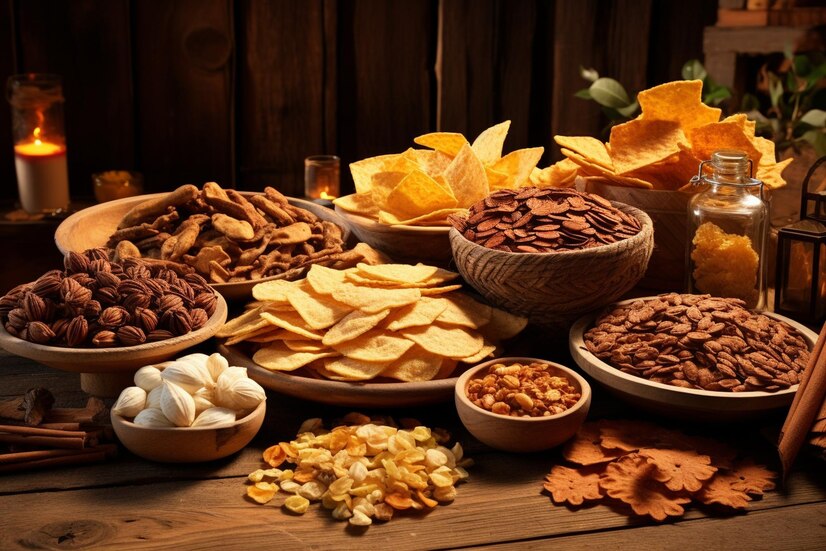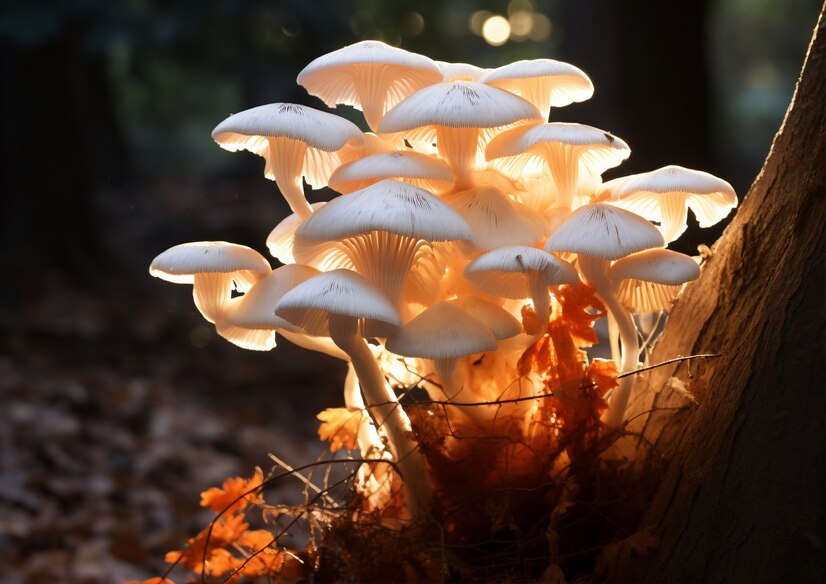FOOD
Cacahuates: How to Roast, Season, and Enjoy this Nutty Treat

Welcome to the flavorful world of cacahuates! These crunchy and versatile nuts have been enjoyed for centuries, offering a delightful blend of nuttiness and richness. Whether you’re a fan of snacking or looking to add some pizzazz to your culinary creations, cacahuates are sure to tickle your taste buds. Join us as we delve into the history, roasting techniques, popular seasonings, and more on how to savor this nutty treat in all its glory!
History of Cacahuates
Cacahuates have a rich history that dates back thousands of years. Believed to have originated in Mesoamerica, these crunchy treats were highly valued by ancient civilizations like the Aztecs and Mayans for their nutritional benefits and delicious flavor. The word “cacahuate” itself comes from the Nahuatl language, showing its deep-rooted connection to the region.
Over time, cacahuates made their way to Europe via Spanish explorers during the Columbian Exchange. They became popular across continents for being a versatile and tasty snack. Today, they are enjoyed worldwide in various forms – roasted, salted, spiced, or even as an ingredient in dishes ranging from savory to sweet.
The journey of cacahuates throughout history showcases how this humble nut has transcended borders and cultures to become a beloved treat cherished by people everywhere.
Roasting Techniques
Roasting cacahuates is an art that can elevate their flavor to new heights. One popular technique is dry roasting, where you simply place the nuts in a single layer on a baking sheet and roast them in the oven until golden brown. This method brings out their natural nuttiness without adding any extra oil.
Another option is pan-roasting, which involves heating a skillet over medium heat and stirring the cacahuates constantly until they are evenly toasted. This method requires more attention but allows for precise control over the roasting process.
Whichever technique you choose, make sure to keep a close eye on the cacahuates as they can go from perfectly roasted to burnt in just seconds!
Popular Seasonings
When it comes to enjoying cacahuates, the seasoning plays a crucial role in enhancing the flavor profile. Popular seasonings include classic options like salt and pepper for a simple yet satisfying taste. For those looking for an extra kick, chili powder or cayenne pepper can add a spicy twist to your roasted cacahuates.
For those with a sweet tooth, cinnamon sugar or honey drizzled over freshly roasted cacahuates can create a delectable treat that hits the spot. Experimenting with different seasonings is part of the fun – try smoked paprika, garlic powder, or even some lime zest for unique flavor combinations that will keep you coming back for more.
Enjoying Cacahuates
When it comes to enjoying cacahuates, the possibilities are endless. Whether you prefer them as a simple snack or as part of a flavorful dish, these crunchy nuts never fail to satisfy your taste buds.
You can munch on roasted cacahuates straight out of the shell for a quick and easy snack. Their nutty flavor and satisfying crunch make them an ideal treat for any time of day.
For those looking to elevate their culinary experience, try incorporating cacahuates into recipes like salads, stir-fries, or even desserts. The versatility of these nuts adds depth and texture to various dishes, making them a must-have ingredient in your pantry.
Cacahuates in Different Cuisines
From Latin America to Asia, cacahuates add depth and complexity to dishes across different cultures, showcasing their adaptability and universal appeal.
Cacahuates vs. Peanuts: A Comparison
When it comes to nuts, cacahuates and peanuts may seem similar, but they have their differences. Cacahuates are a type of peanut native to Mexico, known for their rich flavor and larger size compared to regular peanuts. Peanuts, on the other hand, are more commonly found worldwide and come in various varieties like Spanish or Valencia.
While both cacahuates and peanuts belong to the legume family, cacahuates tend to have a sweeter taste with a slightly softer texture than regular peanuts. In terms of culinary uses, cacahuates are often favored for making traditional Mexican dishes like mole sauces or as a standalone snack with seasonings like chili powder or lime.
In terms of nutrition, both cacahuates and peanuts offer health benefits such as being high in protein and healthy fats. However, some people prefer the unique taste of cacahuates over regular peanuts due to their distinct flavor profile. Whether you enjoy them roasted or seasoned in your favorite dish, both options provide a tasty nutty treat worth savoring.
Shopping for Cacahuates
When it comes to shopping for cacahuates, there are a few things to keep in mind to ensure you get the best quality nuts. Start by looking for reputable stores or online retailers that specialize in authentic Mexican snacks. Check the packaging and make sure there are no signs of staleness or mold.
Opt for organic or locally sourced caca-huates if possible to support sustainable practices and enjoy fresher flavors. Consider buying in bulk if you plan on using them frequently in your cooking or snacking routine. With a little bit of attention to detail, you can find the perfect caca-huates to roast, season, and savor!
Customer Reviews and Recommendations
Customer reviews and recommendations play a crucial role in shaping our experience with caca-huates. Reading about others’ experiences can provide valuable insights into different roasting techniques or seasoning combinations that might pique your interest. Some reviewers swear by the traditional salted versions, while others rave about the spicy chili-lime varieties.
Knowing what fellow snack enthusiasts enjoy can help you make informed decisions when selecting your own batch of caca-huates. Whether it’s through online platforms or word-of-mouth recommendations from friends, listening to what others have to say can open up a world of possibilities for how you choose to savor these nutty treats.
Conclusion
Cacahuates, with their rich history, versatile roasting techniques, and array of popular seasonings, are truly a nutty treat enjoyed by many around the world. Whether you prefer them as a snack on their own or incorporated into various cuisines, caca-huates offer a satisfying crunch and flavor that is hard to resist.
When shopping for caca-huates, be sure to look for high-quality options that suit your taste preferences. Consider trying different seasoning blends or experimenting with your own creations to elevate the flavor profile of these delicious nuts.
With rave reviews from satisfied customers and endless possibilities for enjoying caca-huates in various dishes or simply on their own as a snack, it’s clear why these nuts have stood the test of time. So go ahead, roast up a batch, season them to perfection, and savor every crunchy bite of this delightful nutty treat – you won’t be disappointed!
FOOD
Ever heard of the Baby Food Autism Lawsuit? Read All About it Here!

Recent reports have raised alarm over the presence of heavy metals like lead, arsenic, and mercury in baby food products, sparking widespread concern among parents. These contaminants have been linked to serious health risks, including developmental disorders such as autism.
In response, numerous lawsuits have been filed against major baby food companies, alleging negligence and demanding stricter safety standards. If you are seeking representation, it is crucial to consult the best product liability attorneys to navigate the complexities of these legal battles effectively.
Legal representation aside, it also helps to stay updated on the current status of the lawsuit. Dedicated lawsuit websites help in this regard. Lawsuit Legal News is one such website that contains everything you need to know about class action lawsuits in the US. The pages are also updated regularly to make sure plaintiffs or the general public know the current status of the class action lawsuit.
This article aims to provide a comprehensive overview of the ongoing baby food lawsuit and how parents can protect their children from potential harm.
The Rise of Baby Food Lawsuits
The baby food lawsuits began gaining attention in March 2021 after a shocking Congressional report revealed high levels of heavy metals in many popular baby food brands. This report sparked concern among parents and led to a wave of legal actions against baby food manufacturers.
Since the report’s release, around 60 lawsuits have been filed by parents who believe their children’s health has been harmed by these contaminated products. The lawsuits target major baby food companies, accusing them of negligence and failure to ensure the safety of their products.
Some of the early cases were dismissed due to a lack of evidence directly linking the heavy metals to specific health issues in children. However, the growing number of lawsuits highlights the widespread concern and demand for accountability from these companies.
What are the Allegations?
The lawsuits allege that baby food companies knowingly sold products contaminated with high levels of heavy metals, including lead, arsenic, cadmium, and mercury. These contaminants have been found in a variety of baby foods, including rice cereals, purees, and snacks.
Exposure to these heavy metals has been linked to serious health issues such as cancer, organ damage, and developmental disorders like autism. Parents claim that their children have suffered from these health problems after consuming these contaminated products.
Science and the Lawsuit
While there is no definitive evidence linking heavy metal exposure to autism or other developmental disorders, numerous studies have found a correlation between exposure to these contaminants and negative health effects.
For example, a 2020 study by Healthy Babies Bright Futures found that nearly all baby foods tested contained at least one heavy metal. Additionally, the report stated that long-term exposure to high levels of these metals can lead to serious health problems in children.
Despite this strong scientific evidence, proving a direct link between contaminated baby food products and specific health issues in children may be challenging in court. This is where experienced product liability lawyers can help build a strong case and fight for justice on behalf of affected families.
Current Status of the Lawsuits
As the lawsuits continue to gain momentum, baby food companies are facing increasing pressure to address these concerns and take action to ensure the safety of their products.
In response, some manufacturers have announced plans to reduce heavy metal levels in their products over time. However, many parents are calling for immediate action and stricter safety standards.
The lawsuits are still ongoing, with no clear resolution in sight. It is essential for parents to stay informed about any updates or developments in this legal battle and consult an attorney if they believe their child has been affected by contaminated baby food products.

What Parents Can Do
As the lawsuits continue to unfold, parents can take some steps to protect their children from potential harm. These include:
- Being cautious when introducing new foods into their baby’s diet and opting for organic or homemade options whenever possible.
- Staying updated on any product recalls or safety warnings issued by the FDA or individual manufacturers.
- Keeping an eye out for any symptoms of heavy metal exposure in their child, such as developmental delays, irritability, and digestive issues.
- Seeking medical attention if they suspect their child has been exposed to heavy metals and documenting any potential health issues.
Ultimately, it is the responsibility of baby food companies to ensure the safety of their products. However, parents can also take proactive measures to protect their children from potential harm.
FOOD
Brosé: The Rise of Rosé for Men and the Culture Behind It

Introduction
Move over, beer and whiskey—there’s a new drink in town, and it’s pink! Brosé, the playful term for rosé wine embraced by men, is more than just a fad. It’s a cultural shift that challenges traditional gender norms and celebrates the universal appeal of this delightful wine. So, what exactly is brosé, and why are men all over the world raising their glasses to it?
What is Brosé?
Brosé is simply rosé wine enjoyed by men, breaking away from the outdated notion that pink drinks are only for women. This trend celebrates the versatility and refreshing nature of rosé, making it a staple at summer gatherings, rooftop parties, and casual get-togethers. Unlike traditional rosé, which has often been marketed towards women, brosé is all about inclusivity and enjoying good wine without stereotypes.
History of Rosé Wine
Rosé wine has a rich history that dates back thousands of years. Originating in the Mediterranean regions, it was one of the earliest forms of wine produced. Over the centuries, rosé has evolved, gaining popularity in regions like Provence, France, known for its high-quality pink wines. In recent years, rosé has seen a surge in popularity, transcending cultural and gender boundaries.
The Emergence of Brosé
The brosé trend began gaining traction in the mid-2010s, coinciding with the rise of social media and lifestyle influencers. Events like National Rosé Day and popular culture references helped catapult rosé into the spotlight, with men increasingly joining the rosé revolution. Influential figures and celebrities, such as rappers and actors, openly enjoying rosé have also played a significant role in normalizing the trend.
Why Men are Embracing Rosé
Men are embracing rosé for several reasons. Firstly, it’s a refreshing and versatile wine that pairs well with various foods and occasions. Secondly, the shift towards more open and inclusive gender norms has encouraged men to enjoy rosé without fear of judgment. The pink wine’s light and crisp profile make it an excellent choice for warm weather and casual settings, further adding to its appeal.
Marketing and Branding
The marketing of brosé has been key to its success. Brands have cleverly targeted male consumers with bold, masculine packaging and campaigns that highlight the wine’s sophistication and versatility. Taglines like “Real men drink pink” and endorsements from male celebrities have further helped in rebranding rosé as a drink for everyone.
The Social Aspect of Brosé
Brosé has become a social phenomenon, prominently featured at parties, beach outings, and barbecues. Social media platforms like Instagram and TikTok have amplified the trend, with hashtags like #brosé and #roséallday showcasing men enjoying their favorite pink wine. This social aspect has helped foster a community of brosé enthusiasts who share their experiences and recommendations online.
Brosé and Food Pairing
One of the joys of rosé is its versatility in food pairings. Brosé pairs exceptionally well with a variety of dishes, from light salads and seafood to grilled meats and spicy cuisines. Its acidity and fruity notes complement a wide range of flavors, making it a perfect match for almost any meal.
Brosé Festivals and Events
Brosé-themed festivals and events have sprung up around the world, celebrating this beloved wine. Events like the La Nuit en Rosé festival in New York and the Rosé Mansion in Los Angeles offer immersive experiences for rosé lovers, complete with tastings, food pairings, and live entertainment. These events highlight the communal and festive nature of brosé culture.
Brosé in Pop Culture
Rosé has made its mark in pop culture, with numerous references in movies, music, and TV shows. Celebrities often share their love for rosé on social media, further embedding it into popular culture. From music videos to lifestyle blogs, brosé is frequently featured as a trendy and sophisticated choice.
Health Benefits of Rosé
Moderate consumption of rosé, like other wines, may offer certain health benefits. Rich in antioxidants, rosé can contribute to heart health and reduce inflammation. Its lower calorie content compared to other alcoholic beverages also makes it a more health-conscious choice for those watching their intake.
How to Choose a Good Rosé
Selecting a quality rosé can enhance your brosé experience. Look for wines from reputable regions known for their rosé, such as Provence, France. Check the vintage and opt for recent years to ensure freshness. Recommendations from wine experts and sommeliers can also guide you in choosing a rosé that suits your palate.
DIY Brosé Cocktails
Brosé isn’t just for sipping straight—it also makes a fantastic base for cocktails. Popular brosé cocktails include frosé (frozen rosé), rosé sangria, and rosé spritzers. These refreshing drinks are perfect for summer gatherings and add a creative twist to your rosé experience. Experiment with fruit garnishes, herbs, and even a splash of spirits to create your own signature brosé cocktail.
The Future of Brosé
The brosé trend shows no signs of slowing down. As societal norms continue to evolve and the appreciation for rosé grows, we can expect to see even more innovative products and events centered around brosé. The future holds exciting possibilities for new rosé varieties, creative marketing strategies, and expanded acceptance of this delightful wine.
Conclusion
Brosé represents a significant cultural shift towards inclusivity and breaking down gender stereotypes in the world of wine. Its rise in popularity highlights a growing appreciation for rosé’s unique qualities and the joy of sharing good wine with friends, regardless of gender. As brosé continues to make its mark, it promises to remain a beloved part of social and culinary experiences.
FAQs
- What exactly is brosé?
Bro-sé is a playful term for rosé wine that is enjoyed by men, challenging the stereotype that pink drinks are only for women. - How did bro-sé become popular?
Bro-sé gained popularity through social media, influential figures openly enjoying rosé, and cultural events that celebrated the wine, making it trendy and socially acceptable for men. - What are some good food pairings with brosé?
Bro-sé pairs well with a variety of foods, including salads, seafood, grilled meats, and spicy dishes, thanks to its refreshing acidity and fruity notes. - Are there health benefits to drinking bro-sé?
Moderate consumption of bro-sé, like other wines, may offer health benefits such as heart health and reduced inflammation due to its antioxidant content. - How can I make bro-sé cocktails at home?
Popular bro-sé cocktails include frosé, rosé sangria, and rosé spritzers. You can create your own by mixing rosé with fruits, herbs, and spirits to suit your taste.
FOOD
Exploring A Field Guide to Ecuadorian Mushrooms

Introduction to Ecuadorian Mushrooms
Ecuador is a land of stunning biodiversity, where lush rainforests cradle an array of unique flora and fauna. Among these treasures lie Ecuadorian mushrooms—fascinating organisms that thrive in the region’s rich ecosystems. From vibrant edible varieties to mysterious fungi with potent medicinal properties, these mushrooms are more than just a culinary delight; they are woven into the cultural fabric of Ecuador.
Exploring this world can be both enchanting and enlightening. Whether you’re a seasoned forager or simply curious about what lies beneath the forest canopy, understanding A Field Guide to Ecuadorian Mushrooms species opens up new pathways for exploration, creativity, and sustainability. Dive into this field guide as we embark on a journey through Ecuadorian mushrooms—from their diverse types to their role in traditional practices—and discover recipes that celebrate their flavors along the way.
Common Types of Mushrooms Found in Ecuador
Ecuador is a treasure trove of mushroom diversity, thanks to its varied ecosystems. Among the most common types are the vibrant Chanterelles. These golden-hued beauties boast a delicate flavor and are often found in moist, forested areas.
Another notable variety is the Shiitake mushroom. Valued for its rich, umami taste, it’s commonly cultivated but also thrives in wild habitats across Ecuador’s highlands.
The Porcini mushroom stands out with its robust flavor and meaty texture. Foragers love searching for these under conifers and hardwoods during rainy seasons.
Don’t overlook the medicinal Reishi mushrooms either. Known for their health benefits, these fungi can be spotted on decaying wood throughout lush landscapes.
Each type showcases Ecuador’s unique ecological charm while tempting chefs and food enthusiasts alike with endless culinary possibilities.
Foraging and Safety Tips
Foraging for mushrooms in Ecuador can be a rewarding adventure, but safety should always come first. Familiarize yourself with the local species before heading into the wild. Some mushrooms are edible, while others can be toxic or even deadly.
Invest time in studying field guides or joining local foraging groups. Learning from experienced foragers will enhance your knowledge and confidence when identifying various types of fungi.
Always carry a basket instead of plastic bags to allow spores to spread as you forage. This simple practice helps sustain ecological balance.
Before consuming any mushroom, conduct a spore print test. This technique involves placing the cap on paper overnight to reveal its unique spore color. If unsure about a find, it’s best to err on the side of caution—never eat anything you’re not completely sure is safe.
Keep an eye out for environmental changes too; some areas may have pesticides that could contaminate wild mushrooms.
Traditional Uses of Mushrooms in Ecuadorian Culture
Mushrooms hold a special place in Ecuadorian culture, woven into the fabric of ancient traditions and modern practices. Indigenous communities have long recognized their medicinal properties, using various species to treat ailments ranging from respiratory issues to digestive troubles.
In rituals and ceremonies, mushrooms are often seen as sacred. They symbolize connection to nature and spirituality. Some tribes incorporate them into healing rites, believing they enhance spiritual journeys.
Culinary uses abound as well. Traditional dishes feature local mushrooms that add depth and flavor. From hearty stews to simple sautés, these fungi elevate everyday meals with rich tastes.
Moreover, knowledge about mushroom foraging is passed down through generations. This fosters a deep respect for nature’s bounty while promoting sustainable harvesting practices within communities across the country. Such cultural richness showcases the integral role of mushrooms beyond mere sustenance or medicine—acting instead as vital components of identity and heritage.
Culinary Delights: Recipes Using Ecuadorian Mushrooms
Ecuadorian mushrooms bring a unique flavor to various dishes. Their earthy tones and varied textures can elevate even the simplest of meals.
One delightful recipe is mushroom ceviche. Combine finely chopped fresh Ecuadorian mushrooms with lime juice, red onion, cilantro, and a hint of chili for a refreshing twist on this classic dish. Serve it chilled for an appetizer that’s sure to impress.
Another option is mushroom soup made from local varieties like champiñones or shiitake. Sauté onions and garlic in olive oil, then add sliced mushrooms and vegetable broth. Simmer until tender and blend until creamy for a comforting bowl of goodness.
For those who enjoy pasta, sautéing Ecuadorian mushrooms with garlic and herbs creates an irresistible sauce. Toss it with your favorite noodles for an easy yet gourmet meal that highlights the wonderful flavors these fungi offer.
Experimenting with different types will unveil new culinary experiences full of surprises!
The Role of Mushrooms in Sustainable Farming Practices
Mushrooms play a crucial role in sustainable farming. They naturally break down organic matter, enhancing soil health and fertility. This decomposition process enriches the earth, allowing other plants to thrive.
Farmers have begun integrating mushrooms into crop rotation systems. Their ability to improve soil structure supports better water retention and nutrient availability. As a result, this practice reduces the need for chemical fertilizers.
Mycorrhizal fungi form beneficial partnerships with plant roots. These relationships enhance nutrient uptake while significantly reducing erosion risks. Thus, farms become more resilient against harsh weather conditions.
Moreover, mushroom cultivation can utilize agricultural waste products like straw or sawdust. This not only minimizes waste but also diversifies farmers’ income streams by tapping into local markets for fresh mushrooms.
Embracing fungi in agriculture creates a healthier ecosystem while promoting biodiversity on farms across Ecuador and beyond.
Conclusion: A Field Guide to Ecuadorian Mushrooms
A Field Guide to Ecuadorian Mushrooms are a fascinating component of the country’s rich biodiversity. They offer unique flavors and nutritional benefits that can elevate any dish.
Foraging for these fungi is not just an adventure; it’s a way to connect with nature. It promotes awareness about local ecosystems and encourages sustainable practices.
Mushrooms also play a significant role in Ecuador’s culture, from traditional medicine to celebrations. Their incorporation into local cuisine showcases the creativity of Ecuadorian chefs.
As interest in sustainable farming grows, mushrooms stand out as valuable allies in promoting soil health and biodiversity. They remind us that every ingredient has its place in creating a balanced ecosystem.
Exploring this world opens doors to new tastes and experiences, highlighting the importance of preserving such treasures for future generations. Embrace your curiosity, dive deeper into mushroom exploration, and enjoy all that Ecuador has to offer!
FAQs
- What types of mushrooms are commonly found in Ecuador?
Ecuador is home to a wide variety of mushrooms. Some popular species include the Chanterelle, Porcini, and Shiitake. Each type has its unique flavor profile and characteristics.
- Are there any poisonous mushrooms in Ecuador?
Yes, there are toxic varieties present. It’s crucial to educate yourself about which ones to avoid. Always consult an expert or use reliable field guides before foraging.
- How can I safely forage for mushrooms in Ecuador?
Start by learning from experienced foragers or joining local mushroom hunting groups. Bring along a guidebook or app that helps identify edible varieties. Avoid areas near roads or polluted sites.
- What role do mushrooms play in traditional Ecuadorian cuisine?
Mushrooms are often used in soups, stews, and various dishes throughout Ecuadorian culture. They add depth and richness to meals while also providing nutritional benefits.
- Can you recommend any specific recipes featuring Ecuadorian mushrooms?
Absolutely! Try making a flavorful Mushroom Ceviche with fresh citrus juices or a hearty Mushroom Risotto infused with local spices for a delicious twist on classic dishes.
- How do mushrooms contribute to sustainable farming practices in Ecuador?
Mushrooms improve soil health by breaking down organic matter and enriching it with nutrients. They also offer farmers an additional source of income through cultivation alongside other crops.
- Is mushroom farming viable as an income source in rural areas?
Yes! Many small-scale farmers have successfully integrated mushroom cultivation into their operations, benefiting both their families and local economies while promoting biodiversity.

 Cartoon5 months ago
Cartoon5 months agoUnlocking the Potential of Nekopoi.care: A Comprehensive Guide

 Game4 months ago
Game4 months agoExploring Aopickleballthietke.com: Your Ultimate Pickleball Destination

 BUSINESS4 months ago
BUSINESS4 months agoWhat Companies Are In The Consumer Services Field

 HEALTH5 months ago
HEALTH5 months agoUnveiling the Mystery of Pikruos: A Comprehensive Guide

 HOME IMPROVEMENT5 months ago
HOME IMPROVEMENT5 months agoExploring the Events of 2023-1954: A Look Back in Time

 TECHNOLOGY4 months ago
TECHNOLOGY4 months agoUnderstanding Coomersu

 FASHION4 months ago
FASHION4 months ago5 Reasons Why Every Woman Needs a Long Sleeve Dress in Her Closet

 ENTERTAINMENT5 months ago
ENTERTAINMENT5 months agoThe Epic Return: Revenge of the Iron-Blooded Sword Hound
















